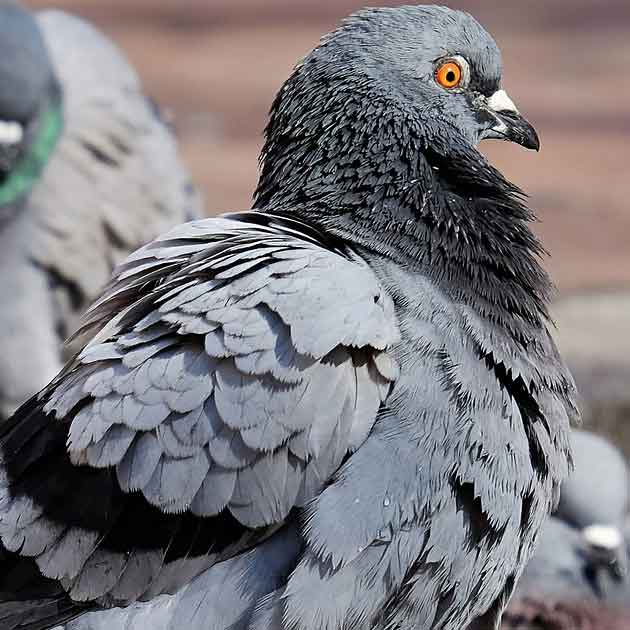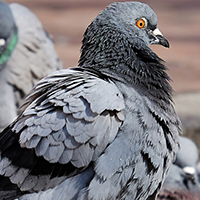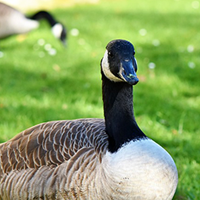Northern Rough-winged swallows and purple martins are not known for being pests, and we rarely see cases where we are dealing with these swallows, but like all other swallows in Ontario, they are protected species, but neither of them are listed as endangered. Although we rarely see these swallows as pests, in a case where they were in a pest situation they would be handled very similarly to all other swallow situations. Finding or providing alternative housing, as in the case of the barn swallow, and using deterrents to prevent them from nesting in problem areas.
What Hawkeye can do to help?
Hawkeye is known for Falconry, and that is exactly the main technique we would use to get rid of pest swallows in your area. Whether you are on a construction site, farm, industrial park, we’ve got you covered with a customized solution to solve your problem. Contact Hawkeye today at 416 429-5393 to find out more about what Hawkeye can do for you.
Range and Habitat
Purple Martins
The purple martin is normally found in Eastern North America, including some more southern parts of Ontario, and they migrate even further across the Gulf of Mexico during the winter. The habitat of a purple martin can range quite drastically from towns and cities to beaver ponds and open fields. They are often found breeding along the edges of forests and along river beds which provide an ample water source.
Northern Rough-winged Swallows
During the summer breeding season, northern rough-winged swallows are found all over the United States and the southern most parts of every province bordering the US. Not unlike all other swallows, the northern rough-winged swallow also migrates south during the winter to Mexico and surrounding areas. Northern rough-winged swallows have a more specific habitat, enjoying only big open areas near water with lowlands appropriate for foraging.
Physical Attributes
Purple Martin
Unlike the name suggested, the Purple Martin is actually mostly navy blue, with accented black wings, throat, and tail. The female, as with most species of birds, is more drab showing a lot of beige and brown colouring over the breast and belly with still noticeably blue and black features on the back of their bodies showing accurately that this bird is still indeed a purple martin.
Northern Rough-winged Swallow
The Northern Rough-winged Swallow is quite drab and easily mistaken for a bank swallow, but the main difference when you put both of these birds right beside each other is the size, as a bank swallow is quite small, and a northern rough-winged swallow is more the size of a barn or tree swallow. These swallows have a brown back, feathers, head, and crown, and white on their nape, throat, breast, and belly and without a bank swallow right beside, you may get stuck identifying this swallow.
Nesting and Diet Habits
Purple Martin
Purple martins use old woodpecker nests just like tree swallows, but will also nest in bird houses, cacti, cliffs, and manmade structures. As mentioned previously, many people build specific housing to attract purple martins to their property, in which case they make wood or aluminum bird houses. Purple martins can lay up to 6 eggs in one clutch, and lay eggs up to 2 times a year depending on a favourable environment. Because purple martins are the largest swallow, their pure white eggs take a little longer to incubate, up to 18 days. Similarly to all swallows, purple martins eat mainly insects like moths, wasps, spiders, you name it. Like many birds, purple martins like to pick up bits of gravel with their food which helps to break down the tough exoskeleton of many of these insects. The gravel breaks down the food in the gizzard, and then the rocks are regurgitated.
Northern Rough-winged Swallow
Northern rough-winged swallows like to nest in previously created burrows from other birds such as bank swallows and kingfishers. Similarly to the bank swallow, they enjoy gravel or sand banks with a nearby water source. With ongoing development of our cities and towns, these swallows are also starting to nest in places like gutters, drainpipes, and bridges and often will join in with a colony of bank swallows as they share nesting habitat. Northern Rough-winged swallows can lay up to 8 eggs and have a longer incubation period as well, up to 17 days. Eating mainly small insects found over water, the northern rough-winged swallow likes to dive and pick up insects directly off the waters’ surface.
















